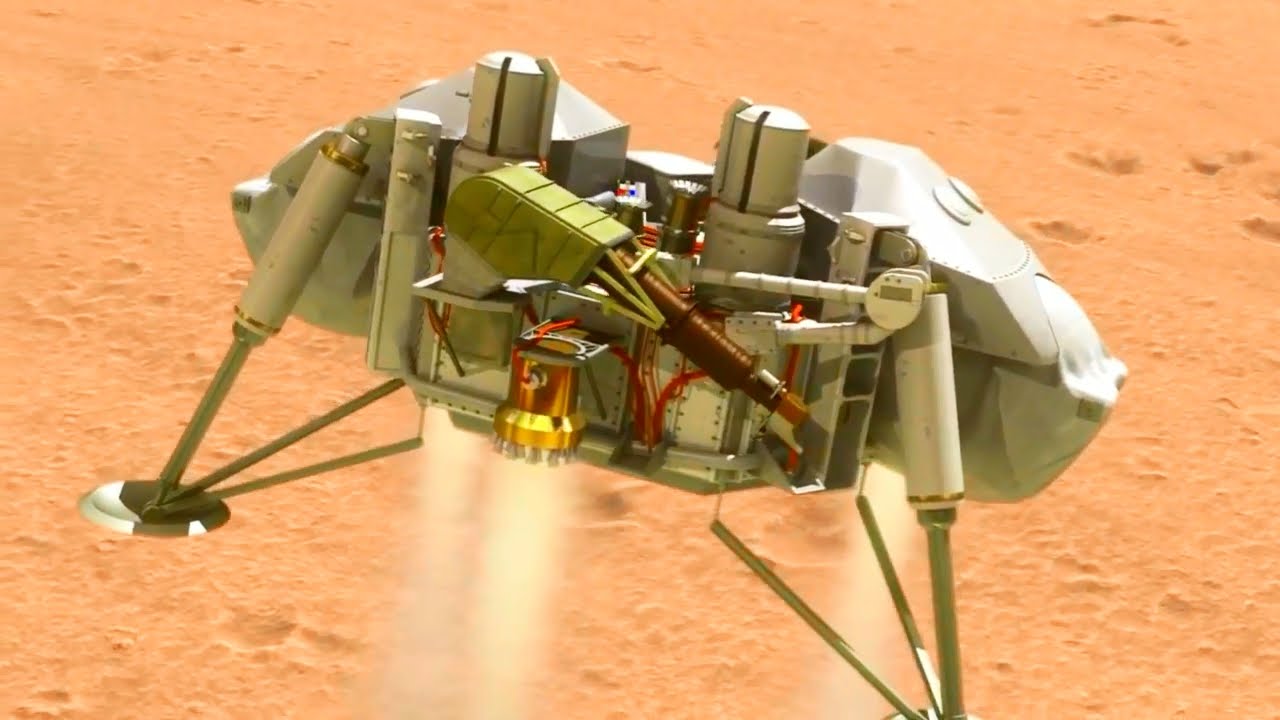more at
“2015 marks 50 years of successful NASA missions to Mars starting with Mariner 4 in 1965. Since then, a total of 15 robotic missions led by various NASA centers have laid the groundwork for future human missions to the Red Planet. The journey to Mars continues with additional robotic missions planned for 2016 and 2020, and human missions in the 2030s.”
Public domain film from NASA JPL.
The exploration of Mars is the study of Mars by spacecraft. Probes sent from Earth beginning in the late 20th century have yielded a dramatic increase in knowledge about the Martian system, focused primarily on understanding its geology and habitability potential…
As of 24 September 2014, there are two scientific rovers on the surface of Mars beaming signals back to Earth (Opportunity of the Mars Exploration Rover mission, and Curiosity of the Mars Science Laboratory mission), and five orbiters currently surveying the planet: Mars Odyssey, Mars Express, Mars Reconnaissance Orbiter, Mars Orbiter Mission and MAVEN.
To date, no sample return missions have been attempted for Mars, and one attempted return mission for Mars’ moon Phobos (Fobos-Grunt) has failed.
On 24 January 2014, NASA reported that current studies on the planet Mars by the Curiosity and Opportunity rovers will now be searching for evidence of ancient life, including a biosphere based on autotrophic, chemotrophic and/or chemolithoautotrophic microorganisms, as well as ancient water, including fluvio-lacustrine environments (plains related to ancient rivers or lakes) that may have been habitable. The search for evidence of habitability, taphonomy (related to fossils), and organic carbon on the planet Mars is now a primary NASA objective…
Starting in 1960 the Soviets launched a series of probes to Mars inluding the intended first flybys and hard (impact) landing (Mars 1962B). The first successful fly-by of Mars was on July 14–15, 1965, by NASA’s Mariner 4. On November 14, 1971 Mariner 9 became the first space probe to orbit another planet when it entered into orbit around Mars. The amount of data returned by probes increased dramatically as technology improved.
The first to contact the surface were two Soviet probes: Mars 2 lander on November 27 and Mars 3 lander on December 2, 1971—Mars 2 failed during descent and Mars 3 about twenty seconds after the first Martian soft landing. Mars 6 failed during descent but did return some corrupted atmospheric data in 1974. The 1975 NASA launches of the Viking program consisted of two orbiters, each with a lander that successfully soft landed in 1976. Viking 1 remained operational for six years, Viking 2 for three. The Viking landers relayed the first color panoramas of Mars and the Viking orbiters mapped the surface so well that the images remain in use.
The Soviet probes Phobos 1 and 2 were sent to Mars in 1988 to study Mars and its two moons, with a focus on Phobos. Phobos 1 lost contact on the way to Mars. Phobos 2, while successfully photographing Mars and Phobos, failed before it was set to release two landers to the surface of Phobos.
Roughly two-thirds of all spacecraft destined for Mars have failed without completing their missions, and it has a reputation as difficult space exploration target. Missions that ended prematurely after Phobos 1 & 2 (1988) include Mars Observer (Launched in 1992), Mars 96 (1996), Mars Climate Orbiter (1999), Mars Polar Lander with Deep Space 2 (1999), Nozomi (2003), Beagle 2 (2003), and Fobos-Grunt with Yinghuo-1 (2011). (See Probing difficulties section)
Following the 1993 failure of the Mars Observer orbiter, the NASA Mars Global Surveyor achieved Mars orbit in 1997. This mission was a complete success, having finished its primary mapping mission in early 2001. Contact was lost with the probe in November 2006 during its third extended program, spending exactly 10 operational years in space. The NASA Mars Pathfinder, carrying a robotic exploration vehicle Sojourner, landed in the Ares Vallis on Mars in the summer of 1997, returning many images.
Phoenix landed on the north polar region of Mars on May 25, 2008. Its robotic arm dug into the Martian soil and the presence of water ice was confirmed on June 20, 2008. The mission concluded on November 10, 2008 after contact was lost. In 2008, the price of transporting material from the surface of Earth to the surface of Mars was approximately US$309,000 per kilogram.
Rosetta came within 250 km of Mars during its 2007 flyby. Dawn flew by Mars in February 2009 for a gravity assist on its way to investigate Vesta and Ceres…

